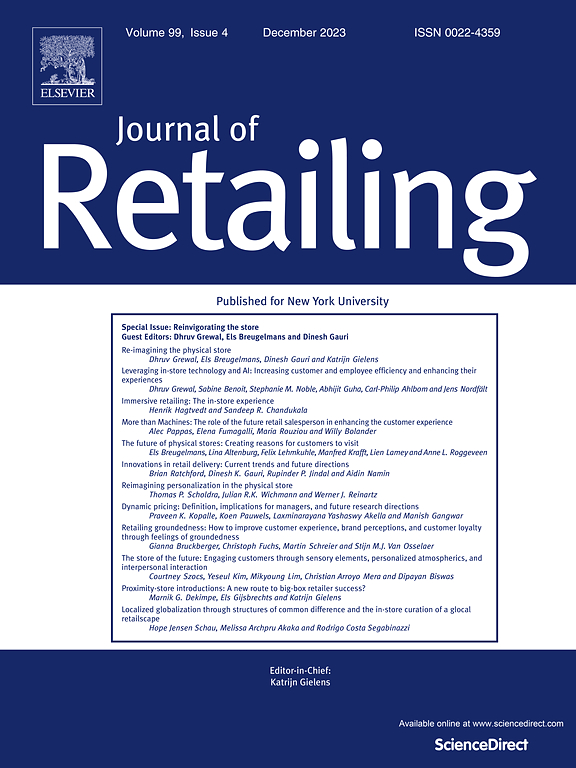Understanding surprise: Toward a theory of surprise marketing
IF 8
1区 管理学
Q1 BUSINESS
引用次数: 0
Abstract
Surprise marketing is a deliberate strategy involving the introduction of unexpected and/or uncertain elements (e.g., unexpected coupons, mystery box) into the customer shopping journey to evoke strong positive emotions. Despite its widespread use, academic research lacks a comprehensive understanding of its intricacies. This study addresses this gap by delving into four crucial dimensions—what, how, why, and when—to provide a more profound comprehension of surprise marketing, define the concept, and delineate its fundamental characteristics. Building on both theoretical literature and real-world business examples, the authors identify curiosity and attribution as mechanisms that initiate four mediating paths: excitement, anxiety, gratitude, and skepticism. These paths underscore the tensions underlying surprise marketing that also shape marketing outcomes across shopping stages and lead to both favorable and adverse effects. Reflecting these inherent dynamics, this study introduces five managerial moderators—surprise stimulus type, surprise stimulus value, surprise complexity, customer loyalty type, and distribution channel—that can either amplify or reduce the dynamic effects of surprise marketing. These boundaries of its influence reveal managerial pathways to achieve favorable outcomes. This article concludes with managerial implications and research directions to advance pioneering trends in surprise marketing practices.

理解惊喜:走向惊喜营销理论
惊喜营销是一种有意的策略,包括在顾客的购物过程中引入意想不到的和/或不确定的元素(例如,意想不到的优惠券,神秘的盒子),以唤起强烈的积极情绪。尽管它被广泛使用,但学术研究缺乏对其复杂性的全面理解。本研究通过深入探究四个关键维度——做什么、如何做、为什么做和何时做——来解决这一差距,为惊喜营销提供更深刻的理解,定义概念,并描绘其基本特征。基于理论文献和现实世界的商业案例,作者认为好奇心和归因是启动四条中介路径的机制:兴奋、焦虑、感激和怀疑。这些路径强调了惊喜营销背后的紧张关系,这种紧张关系也影响了整个购物阶段的营销结果,并导致有利和不利的影响。为了反映这些内在的动态,本研究引入了五个管理调节因子——惊喜刺激类型、惊喜刺激价值、惊喜复杂性、客户忠诚度类型和分销渠道——它们可以放大或减少惊喜营销的动态效应。其影响的这些边界揭示了实现有利结果的管理途径。本文总结了管理意义和研究方向,以推进惊喜营销实践的先驱趋势。
本文章由计算机程序翻译,如有差异,请以英文原文为准。
求助全文
约1分钟内获得全文
求助全文
来源期刊

Journal of Retailing
BUSINESS-
CiteScore
15.90
自引率
6.00%
发文量
54
审稿时长
67 days
期刊介绍:
The focus of The Journal of Retailing is to advance knowledge and its practical application in the field of retailing. This includes various aspects such as retail management, evolution, and current theories. The journal covers both products and services in retail, supply chains and distribution channels that serve retailers, relationships between retailers and supply chain members, and direct marketing as well as emerging electronic markets for households. Articles published in the journal may take an economic or behavioral approach, but all are based on rigorous analysis and a deep understanding of relevant theories and existing literature. Empirical research follows the scientific method, employing modern sampling procedures and statistical analysis.
 求助内容:
求助内容: 应助结果提醒方式:
应助结果提醒方式:


